Technology Basics includes sessions that introduce the BioRadio hardware, the Lab Learning software and cover the basics of data acquisition and signal processing. Other engineering concepts such as breadboard circuit design, wireless medical telemetry and the use of accelerometers is also included.
Data Acquisition Basics
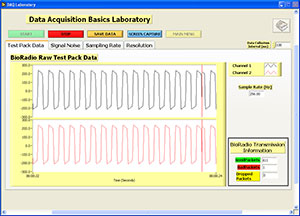
This lab demonstrates how to use the BioRadio and Lab Learning software for data collection. A sample 10Hz square wave is used to familiarize students with fundamentals such as instrumentation amplifiers, technical aspects of biotelemetry, sources of noise, sampling theory and resolution.
Digital Signal Processing
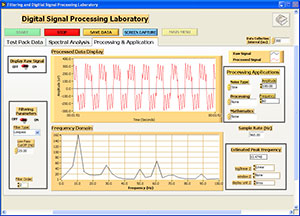
This lab introduces the frequency domain and DSP using a 10Hz square wave. Students examine peak frequency and harmonics along with adding noise to the signal to practice the use of high and low pass filters. An introduction to elements such as rectification, normalization and various mathematical operations is also provided.
Statistical Analysis
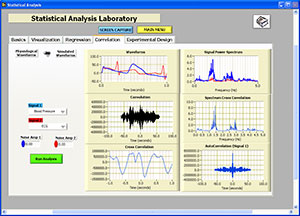
In this lab, various statistical analysis methods are introduced including mean standard deviation and variance. Sample data sets are provided to demonstrate regression modeling and generalization, correlation, convolution and cross correlation.
Breadboard Circuit Design
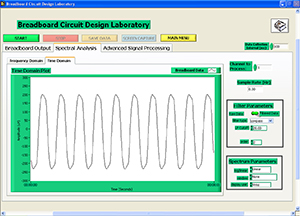
Hands-on circuit design using a breadboard and electronic components is introduced. Several types of signal generator outputs are designed that can be input into the BioRadio. This includes sine, square and saw tooth waves.
Accelerometry
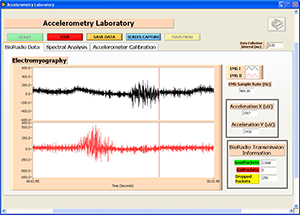
A two-axis MEMS accelerometer embedded in the BioRadio along with two channels of EMG are used to develop a simple motion sensing system. Data collected is used to develop and algorithm to detect wrist angle based on the output of the BioRadio.
Post-Processing Toolbox

The post-processing toolbox is provided for further data analysis of previously saved data. Sections for plotting raw data and applying digital filters are available. Also included are tools for statistical analysis and joint time-frequency analysis of saved data.
